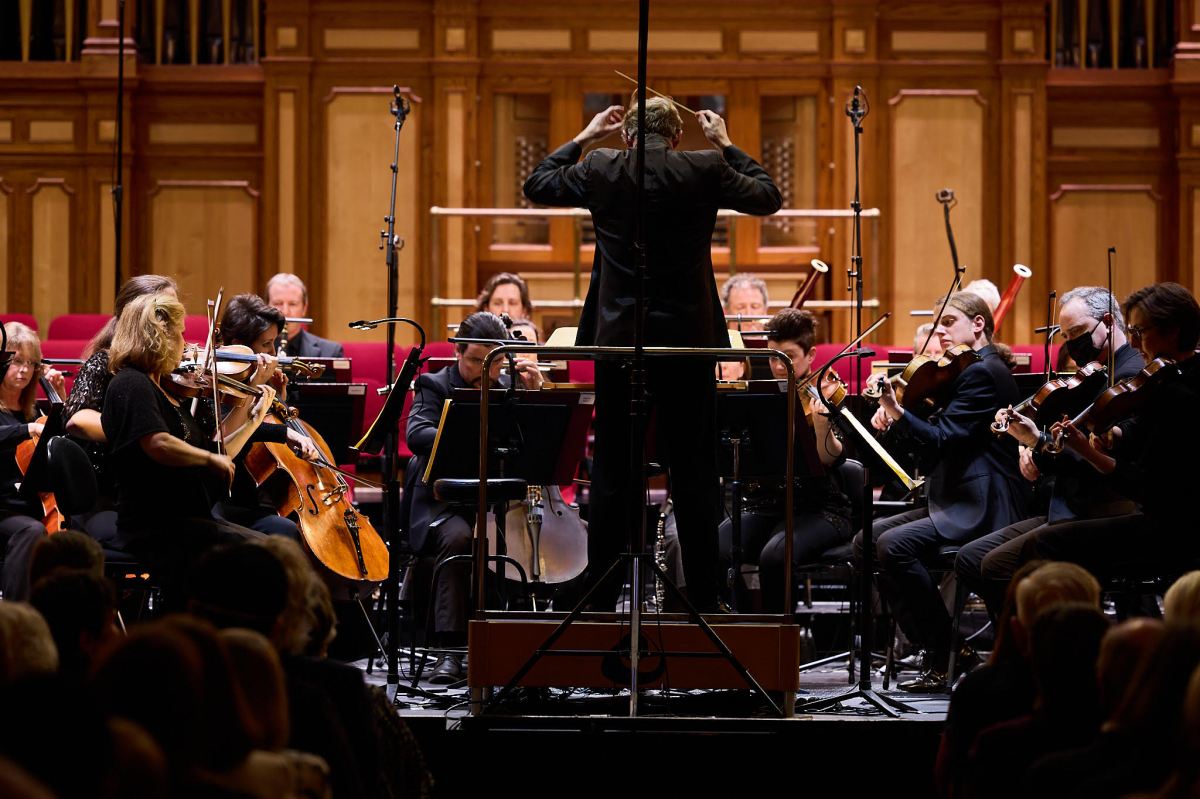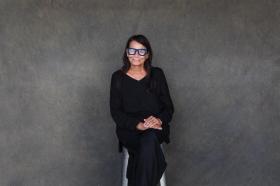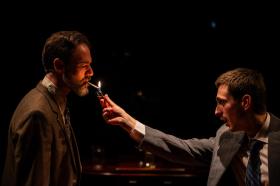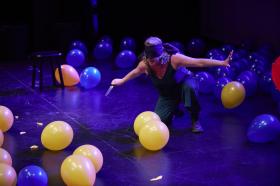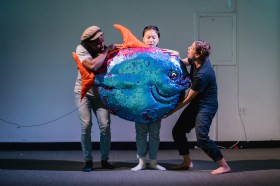The Adelaide Symphony Orchestra has performed the complete cycle of Beethoven symphonies this month in a series of four concerts featuring the renowned British conductor Douglas Boyd.
Concert 3 showcased the 6th and 7th symphonies that together illustrate just a fraction of Beethoven’s immense range and compositional variation. In their entirety, the suite proves (if proof were needed) Beethoven’s iconic place in the Western musical canon.
This is familiar territory for Boyd, who has conducted the complete cycle twice before – and individual symphonies on countless occasions – with orchestras the world over. He’s also played them in his former role as principal oboe with the Chamber Orchestra of Europe, and this deep musical empathy is apparent in his conducting.
Curiously, Boyd and his wife, cellist Sally Pendlebury, lived with Beethoven in their bedroom for a week earlier this year. It was not the ghost of the composer, but the only known bronze life mask, moulded from Beethoven’s face in 1812 by sculptor Franz Klein. ‘You can see the pock marks from his childhood smallpox and the indentation from an abscess is extraordinary’ Boyd said in an interview with The Times. He also admitted to thinking, ‘This is too weird for words.’
As a conductor, Boyd is precise and incisive, but he’s also very much at one with the music. His presence on the podium is commanding and his physicality is agile, sometimes almost balletic. There was a palpable synergy between Boyd and the players, who were arranged in a mirror setting with the basses unusually to the left of the conductor and the first and second violins seated separately.
The 6th symphony is most often referred to as the Pastoral but it was more grandly titled ‘Pastoral Symphony, or Recollections of Country Life’ by the composer. And so it is, with the orchestra emulating the sights and sounds of a gentle stroll through the countryside around Vienna. But this is not a simple tone poem of an idyllic rural vista; it is much more a meditation on nature and evokes emotions rather than images.
Each of its five movements has a unique name that sets the scene: ‘Awakening of happy feelings upon arriving in the country’ (sometimes written as ‘cheerful feelings’); ‘Scene by the brook’; ‘Peasants’ merrymaking” (or ‘a merry gathering of peasants’); ‘Thunderstorm’; and the climax in ‘Shepherd’s song: Thanksgiving after the storm’ (also known as the Shepherds’ Hymn). The final three movements are segued to create a single musical and emotional experience.
After interval, the orchestra launched into the 7th, an entrancing work that showcases a very different style of composition. Written just four years after the 6th, and styled for a smaller orchestra, this is work that demands close attention. With a prophetic opening and overlapping themes, beautiful solos for the flute and oboe, unusual but highly effective rhythmic motifs, and superb phrases for the winds and strings, the 7th stays with you long after you leave the concert hall.
The sudden shifts and then unexpected pauses give this work a dramatic effect that sounds modern, even today. And throughout the performance, the timpani played a key role in the dramatic soundscape. It is almost incomprehensible to think that was Beethoven profoundly deaf when he composed the 7th and later works – such was his musical genius.
The ASO cleverly produced one substantial program of almost 60 pages to accompany the four concerts. This allowed audiences to read the notes for the entire cycle, giving them an insight into the works and the composer beyond the individual concert they were attending.
Boyd has also paid tribute to the ASO saying, ‘They’re completely open to new ideas and ready to think of these pieces as if they were being played for the first time. That’s an exciting mindset for me and, I hope, for our audiences.’
The Beethoven cycle is the ASO’s last offering under outgoing managing director Vincent Ciccarello, who leaves after nine years to take up a new role at the Art Gallery of South Australia. He acknowledges in the program notes that his tenure at the ASO began with Beethoven (in a concert with Pinchas Zukerman playing the Violin Concerto) and so fittingly ends with Beethoven.
It is clear to the ASO’s audience, benefactors, and critics, that the orchestra has changed very much for the better under Ciccarello’s enthusiastic and dedicated leadership. Importantly, the orchestra now plays a stronger and more integrated role in the cultural life of the city, despite the obvious challenges of the immediate past.
Read: Book review: Here Be Leviathans, Chris Flynn
Congratulations to the ASO on a wonderful Beethoven cycle and to Vincent Ciccarello on his achievements.
The Adelaide Symphony Orchestra with conductor Douglas Boyd played Beethoven’s 6th and 7th to a full house at the Adelaide Town Hall on 21 September as part of the complete cycle.
